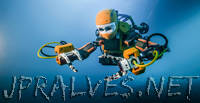
“Oussama Khatib held his breath as he swam through the wreck of La Lune, 100 meters below the Mediterranean. The flagship of King Louis XIV sank here in 1664, 20 miles off the southern coast of France, and no human had touched the ruins – or the countless treasures and artifacts the ship once carried – in the centuries since. With guidance from a team of skilled deep-sea archaeologists who had studied the site, Khatib, a professor of computer science at Stanford, spotted a grapefruit-size vase. He hovered precisely over the vase, reached out, felt its contours and weight, and stuck a finger inside to get a good grip. He swam over to a recovery basket, gently laid down the vase and shut the lid. Then he stood up and high-fived the dozen archaeologists and engineers who had been crowded around him.”
